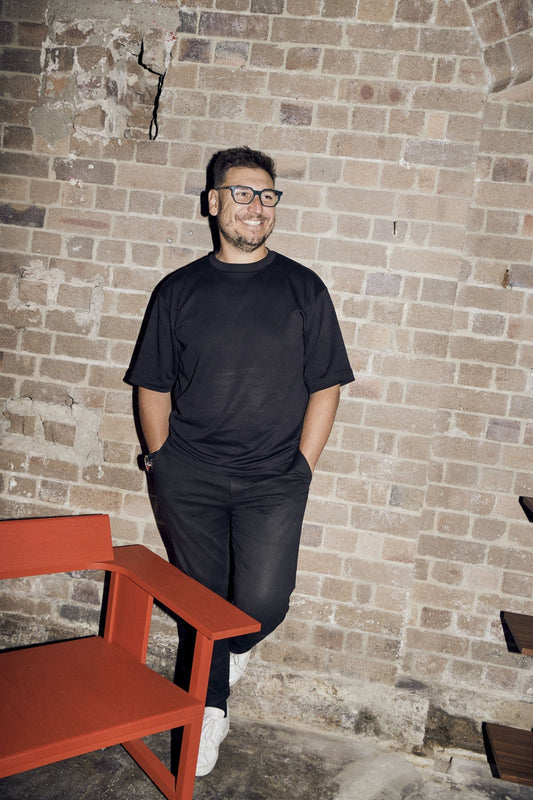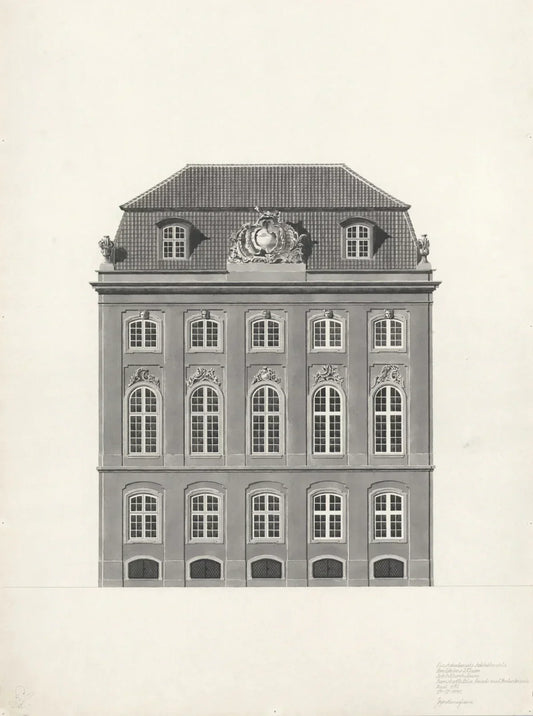Normann Copenhagen believe in products that can last a lifetime. It makes sense for the consumer, and it makes sense for the environment. They aim to work together with their clients to limit their impact on the environment.
In 2012, Normann Copenhagen established an in-house design studio with designers and engineers working closely together. This means they can follow and shape the design processes all the way from initial idea to the final product. In addition, they collaborate with external designers from all over the world.
When introducing a new furniture design to the market, a new lamp or an accessory, Normann Copenhagen’s skilled team of designers and engineers challenge existing ways of production and utility of materials, in order to create the best possible product, manufactured in the most responsible way.
District spoke with Normann Copenhagen’s CEO and co-founder Poul Madsen at ‘An Intimate Evening with Normann Copenhagen’. A Q&A focussed on sustainability, and the brands personal journey in reducing their carbon footprint.
Q1: Can you share some background about Normann Copenhagen – what is the philosophy behind the brand, when and why was it founded?
Normann Copenhagen was founded by my good friend Jan Andersen and myself in 1999. We shared a keen interest in Danish design, and even had our own, small design companies before deciding to merge under the name Normann Copenhagen. Our brand’s philosophy is to challenge conventional thinking through great design.
Q2: Sustainability has been a big focus for Normann Copenhagen, can you talk us through this journey, what initiatives and in what ways are you looking at sustainability?
Our sustainability journey is ongoing. One of our main beliefs is that durability and high-quality is at the core of sustainable design. We’re not perfect, but we recognise our responsibility as a leading design company and are always striving to better ourselves and minimise our environmental impact. In 2021, we launched our Bit Stool and Polli Rug: Two products made entirely from discarded plastic waste. We’re working on several different initiatives to introduce more sustainably sourced materials in new and existing collections.
We recently moved to new headquarters in the heart of Copenhagen. Our new house underwent a complete renovation, where sustainable solutions were considered throughout, such as granulated, recycled paper used as an acoustic solution in the ceilings to solar cells on the roof contributing to the building’s energy consumption. Our staff Eatery makes healthy, organic meals for our employees every day, oftentimes using leftovers from the day before to minimise food waste. Additionally, we have a gym for our employees to use in their free time.
We have an in-house sourcing team who work hard to source the most sustainable and responsible materials on the market. We are working on introducing new, innovative and circular materials in our collection… This includes our products as well as packaging. The majority of our packaging has been substituted with a new packaging made from 80% recycled paper, while the majority of our polybags are made of 100% recycled plastic.
We are constantly reevaluating ourselves, holding our operations accountable for our environmental footprint and exploring new ways in which our supply chain can become more sustainable.
Q3: And how is sustainability considered in the design and manufacturing of your products specifically?
When introducing a new product to the market, we consider its entire lifecycle. From the responsible sourcing of materials, an environmentally friendly production and packaging, low-emission transportation and so on. The majority of our products are designed so that, after years of good use, they can be disassembled and recycled, ensuring a circular life cycle.
Q4: Why do you think sustainability is so important to address, and what role can you see design playing?
I don’t think anyone can dispute the importance of practicing sustainable operations. I would like for Normann Copenhagen to be an example of how to run a sustainable design business. Sustainability and design can easily go hand in hand, and I think we at Normann Copenhagen can contribute to emphasising that.
Q5: What’s your process when designing? Do you work with an in-house design team?
Yes, we have an in-house design team run by our head of design, Simon Legald, who is the designer behind a number of Normann Copenhagen’s bestsellers such as the Form Chair collection. We like to support students, their education and their fresh take on design, so the design team typically has a number of interns, often exchange students from other countries, who work as an active part of Normann Copenhagen’s design studio. Our process is different and varies from design to design, but always in close collaboration with our sourcing team.
Q6: Given your international and Scandinavian outlook – I would love to know what you think about Australian design, interiors and architecture? What stands out to you?
My impression of Australian design and architecture is that it reflects the country and its people. I find it to be very open and airy, welcoming and hospitable. To me, the design and architecture in Australia is also a reflection of the climate – my experience is that it combines the indoors and outdoors in a very clean, yet homey way by bringing warmth and nature inside.
Q7: We’ve seen markets changing, being up-ended, supply chains disrupted, a rethinking of the workplace and home – where do you see design heading, in particular in the commercial space?
I think multifunctional workspaces, at the office as well as in private homes, will become an increasing trend. In terms of commercial spaces, I think sustainable materials will be increasingly sought-after. I also think everyone is becoming more and more aware of which companies they support, demanding companies to re-evaluate and better themselves to reduce their environmental impact. I see it as one of our finest tasks to meet these high standards and commit ourselves to constantly improving our company and its environmental and social footprint.















